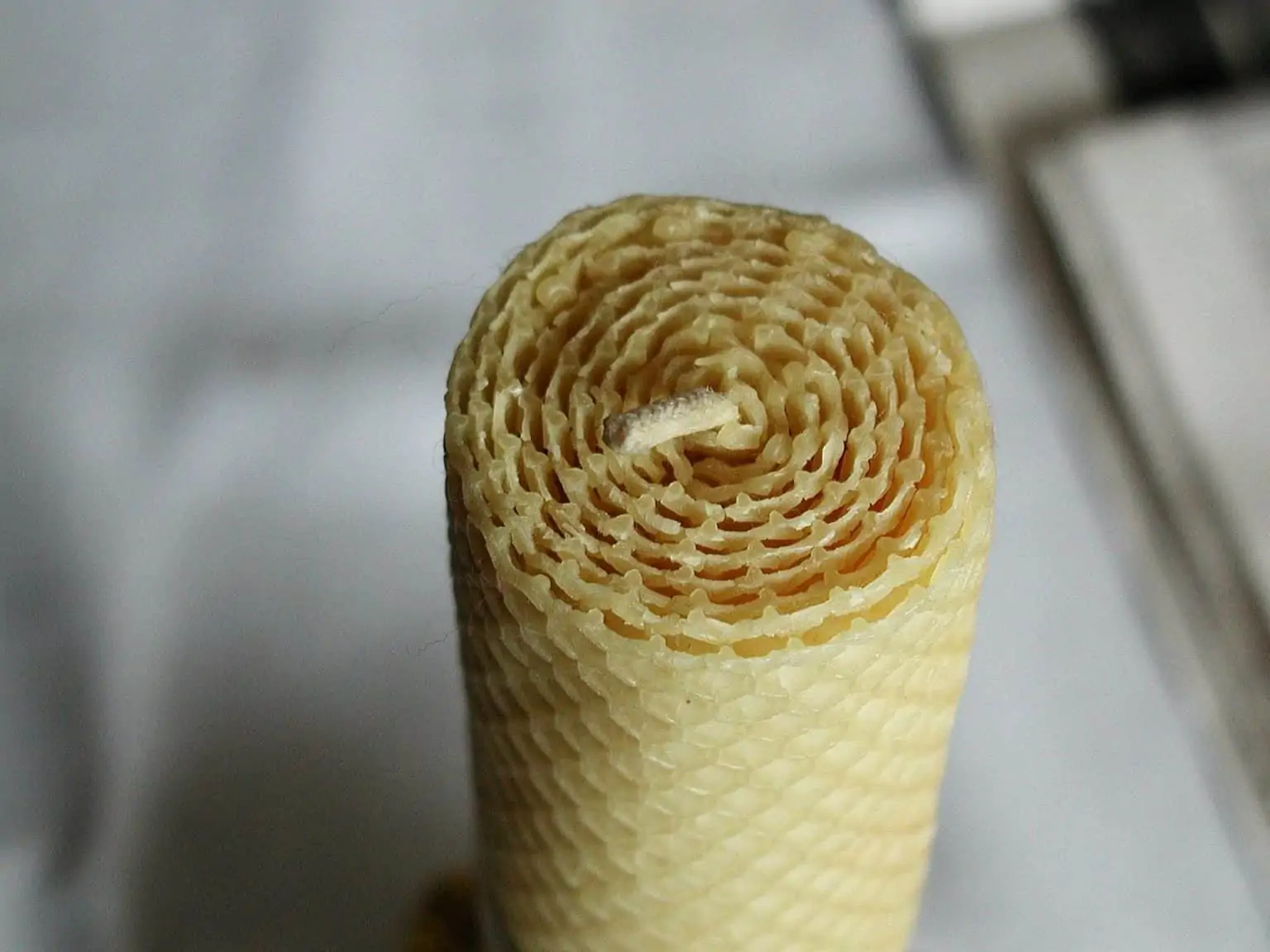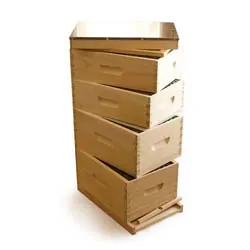The Special Attraction of Honey Bee Products
Calling yourself a beekeeper isn’t as easy as installing a sieve in a beehive and cranking it a few times a year for freshly harvested, raw honey. The more I learn about bees and the humans that care for them, the more I understand that beekeeping is more about building a connection with nature than counting the number of honey jars produced each summer. It takes a deep understanding of the inner workings of your beehive, and all the natural elements that surround it, to be able to successfully produce and extract the full array of honey bee products from your hive.
However, if you care for your bees attentively, they will reward you.
While I’m not a beekeeper (yet), I have to admit, the rewards are pretty awesome.
1. Honey
The average beehive needs about 20 to 30 pounds of honey to sustain itself through a long winter. But like your mom’s overflowing Thanksgiving buffet (do we really need three different kinds of stuffing?!), productive bees often produce far more honey than they need, sometimes up to 60 pounds. As the beekeeper, you can reap some well-earned returns by extracting the extra honey, and impress all your friends with a locally produced, delicious sweet treat.
My Favorite Use: The World’s Best Baklava
If I get my hands on some homemade honey, the first recipe I would bring to the next level is baklava, a delectable Turkish treat. This special dessert takes some effort to make, though the painstakingly slow layering is always worth the mouthwatering results. Take phyllo dough and layer it with your favorite nuts, bake, and drizzle a mixture of honey and vanilla over the whole lovely concoction. Then, patiently (or not so patiently) wait a day or so, while the dough and nuts are infused with the sweet honey flavor. I can only imagine how delicious homemade honey would make this very special dessert. I think it might be enough to make a beekeeper out of anyone, even a dog-lover like myself.
Beeswax

Beekeepers accumulate wax as they extract honey from their hives, remove cell cappings, and replace old beehive frames. This sought-after bee product has a multitude of uses including candles, hair and skin care products, crayons, furniture polish, and even DIY modeling clay. Typical beekeepers harvest just about one pound of beeswax per hundred pounds of honey. This is definitely enough for a few homemade gifts.
My Favorite Use: Natural, Clean-Burning Candles
It’s hard to argue with a candlelit dinner, or comforting wafts of “Clean Laundry” and “Evergreen” from your favorite twinkling wax products. Unfortunately for candle-lovers like myself, some research has shown that paraffin candles (the popular, widely marketed kind) emit harmful chemicals and indoor air pollutants when burned. While the study isn’t startling enough to warrant throwing all my candles in the trash, I do think that all-natural beeswax candles are an excellent alternative. They’ve been shown to reduce allergies, and even draw toxins out of the air. Plus, they give off a wonderful honeyed smell and have an extra-long burn time. It’s hard to imagine a more thoughtful gift!
Bee Pollen
Pollen, the male seed of flowers, is another bee product that can be extracted by careful beekeepers. This protein-rich substance is considered to be naturally nourishing, and is used in Chinese medicine for a variety of medicinal purposes. The jury is still out about how truly beneficial bee pollen is for human health. Some health experts swear by it, toting its ability to improve athletic performance, aid in weight loss, and provide relief from a variety of health ailments, including migraine headaches and acne.
Major health organizations say there’s just not enough evidence to back up these claims, but that’s not enough to stop many bee pollen supporters from stocking up at their local health food store. Either way, rest easy knowing that bees aren’t distraught by a little less pollen: beekeepers use pollen traps sparingly, without disturbing their hives.
My Favorite Use: Natural Home Remedies
There’s never a guarantee that any sworn-by home remedy will truly work miracles. Do cool cucumbers placed on my eyes actually relieve my headaches, or are they just an excuse to close my eyes for a few minutes? It’s hard to say. Considering that bee pollen is unlikely to harm me (as long as I’m not severely allergic), I don’t think it can hurt to give it a try next time that I have a migraine headache or an acne breakout. Obligatory disclaimer: it’s important to consult your regular healthcare provider before adding any kind of supplement to your regular routine. I would do that first!
Royal Jelly
This special, queenly meal has long been thought to have magical properties when it comes to health. In the hive, it’s used for nurturing and developing the future queen bees, which can live up to fifty times longer than your typical worker bee. It’s no wonder that health and longevity experts want to figure out the secret in that special sauce. Royal Jelly can be extracted carefully from queen cups only when there is a surplus, by carefully removing the bee larvae from the cup and then using a syringe to grab the Royal Jelly. Many beekeepers save the surplus Royal Jelly for future use in the hive.
My Favorite Use: Let the Bees Thrive!
While there are some claims about the amazing benefits of Royal Jelly for humans, including lowering cholesterol, reducing the effects of menopause, and even curing depression, all of these claims have been unsubstantiated by the scientific process. Companies have even been sued for their wildly unsupported marketing claims used to sell Royal Jelly. While there’s still plenty of testing and research to be done, I think everyone is missing the coolest thing about Royal Jelly: it’s an amazing natural phenomenon that we can understand through beekeeping. It keeps our Queen Bees healthy and fertile and nourishes our beehives.
With all of uses for honey bee products, it’s important to remember that they’re not really made with us in mind. Let the bees flourish and reproduce, ensuring that our beehives continue to bring us benefits for many years to come!
